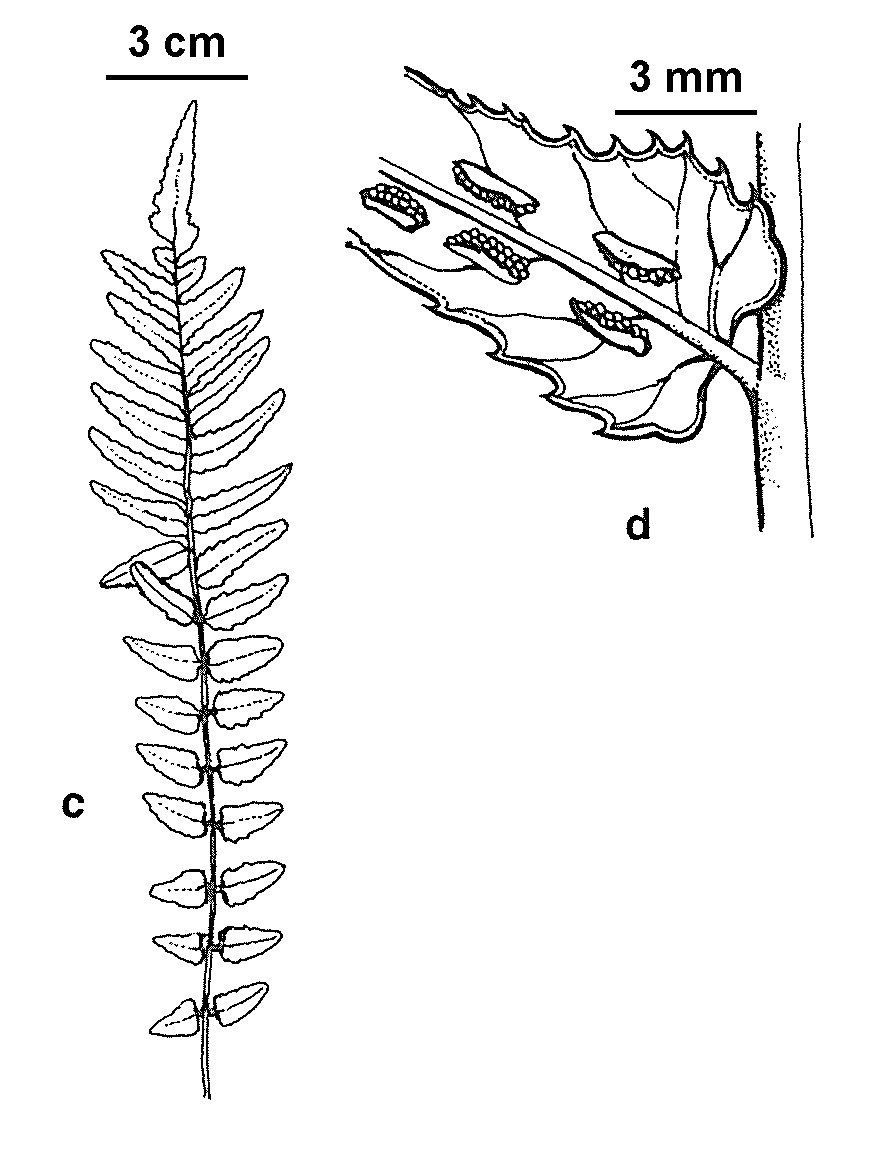Blechnum rupestre
(Kaulf. ex Link) Christenh.Fronds clustered; sterile fronds 10–25 (rarely to 55) cm long, spreading, membranous; fertile fronds 15–40 cm long, erect, harsher. Stipe much shorter than lamina, usually pale, darker towards base, smooth; scales scattered, sessile, light brown and narrow. Lamina pinnate, mid-green; pinnae in lower half attached by midribs only, clearly separated, stalked, small, broadly oblong, apices rounded, bases often strongly lobed; pinnae in upper half sessile, much longer than broad, widened bases contiguous, close-set; pinnae near apex often fused into tail-like structure; pinnae on fertile fronds very narrow; areoles narrow, in a single row each side of midvein. Rachis smooth, pale, often with short hairs and few linear scales. Sori narrowly oblong, more than 1.5 mm long, in single row on each side of midvein, often becoming confluent.
VVP, GipP, OtP, WaP, Gold, CVU, GGr, DunT, EGL, EGU, HSF, HNF, OtR, Strz, VAlp. Also WA, NT, SA, Qld, NSW, Tas. Typically occurs on steep creek-banks or in seepage areas in forests of southern Victoria, from near Hamilton in the west to the NSW border beyond Mallacoota in the east.
Young fronds are typically soft-textured and tinged pink, while older fronds are less harsh than either Blechnum neohollandicum or B. parrisiae and tend to be spreading rather than erect. Although sterile fronds are usually less than 25 cm tall, and thereby smaller than those of B. parrisiae specimens of B. rupestre with fronds up to 55 cm tall are occasionally found. The sori of B. rupestre are relatively long and often become confluent (see also taxonomic notes under B. neohollandicum). See also note under B. parrisiae.
 Spinning
Spinning
